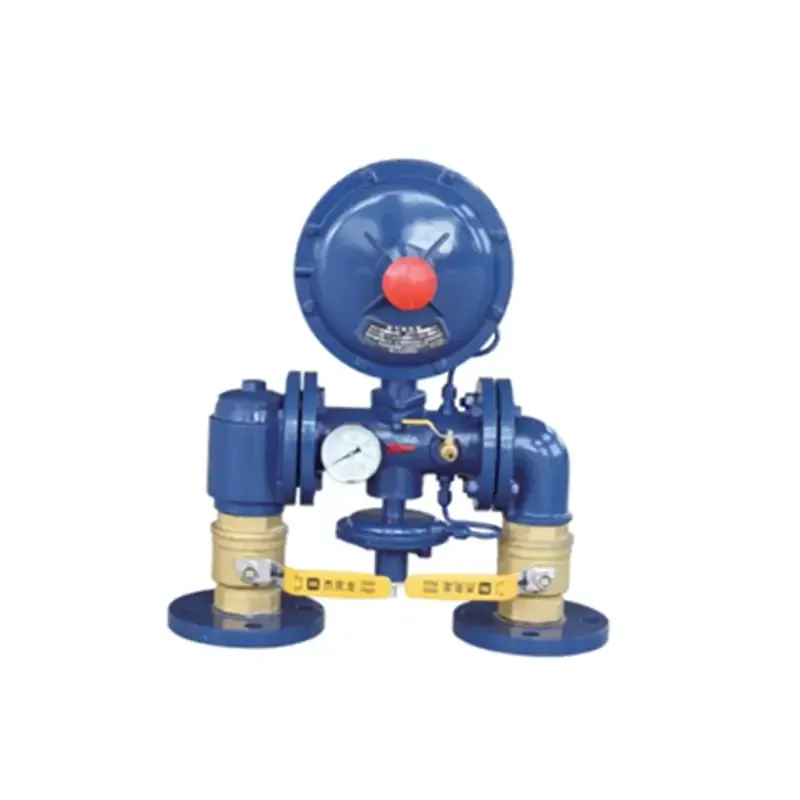
Dec . 06, 2024 06:56
Back to list
Essential Guidelines for Gas Safety Relief Valve Installation and Maintenance
Understanding Gas Safety Relief Valves Essential Components for Safety and Efficiency
Gas safety relief valves are critical components in various industrial and commercial applications, ensuring the safe operation of gas systems. Their primary function is to prevent excessive pressure buildup that could lead to catastrophic failures, explosions, or leaks. In this article, we will explore the importance of gas safety relief valves, their working principles, types, applications, and maintenance considerations.
What is a Gas Safety Relief Valve?
A gas safety relief valve is a mechanical device designed to automatically release excess pressure from gas systems. It acts as a safeguard to regulate pressure levels, ensuring they remain within safe operating limits. When the pressure in the system exceeds a predetermined threshold, the valve opens, allowing gas to escape and thus reducing the internal pressure. Once the pressure falls back to a safe level, the valve closes again to prevent further gas loss.
Importance of Safety Relief Valves
The importance of gas safety relief valves cannot be overstated. In industries that utilize gas systems, such as oil and gas, chemical manufacturing, and food processing, even minor pressure fluctuations can pose significant risks.
1. Preventing Explosions The most crucial role of a gas safety relief valve is to prevent explosions caused by overpressure. If not adequately managed, high-pressure scenarios can lead to disasters that endanger lives and property.
2. Protecting Equipment Excessive pressure can also damage equipment, leading to costly repairs and downtime. Safety relief valves mitigate this risk by maintaining the integrity of system components.
3. Regulatory Compliance Many industries are subject to regulations that require the installation of safety devices like relief valves to ensure safe operations. Compliance with these standards not only protects individuals and assets but also helps avoid legal repercussions.
How Gas Safety Relief Valves Work
Gas safety relief valves function based on a simple principle of pressure regulation. These valves typically consist of a spring mechanism that holds the valve closed under normal operating conditions. The spring tension is set to correspond with the desired pressure threshold.
gas safety relief valve

When the system pressure exceeds this threshold, the force exerted by the gas overcomes the spring tension, causing the valve to lift and open. This allows gas to escape until the pressure drops below the set limit, at which point the spring mechanism forces the valve closed again.
Types of Gas Safety Relief Valves
1. Conventional Type This is the most common form of relief valve, featuring a simple design that is effective for a wide range of applications. Its primary drawback is that it may not provide optimal performance with fluctuating pressures.
2. Balanced Bellows Type This type is engineered to manage varying backpressure conditions more effectively. It utilizes a bellows mechanism that allows for a more consistent response to system pressure changes, making it ideal for applications with fluctuating pressures.
3. Soft-Seated Relief Valve These valves use a soft material for sealing, providing a tighter seal and reducing gas leakage. They are suitable for low-pressure applications where absolute tightness is essential.
Maintenance and Safety Considerations
Regular maintenance of gas safety relief valves is crucial for ensuring their reliability and effectiveness. Here are some best practices
- Periodic Inspection Conduct regular inspections to check for signs of wear, corrosion, or damage. This includes examining seals, springs, and other components. - Testing Calibration Schedule routine testing to verify that the valve opens at the correct pressure. Calibration should be performed by qualified personnel using appropriate tools and techniques.
- Documentation Maintain detailed records of inspections, tests, and any maintenance activities to comply with regulatory requirements and to facilitate any necessary repairs or replacements.
Conclusion
Gas safety relief valves are an indispensable part of any gas handling system. They provide essential protection by preventing overpressure situations that could lead to dangerous accidents. Understanding their operation, types, and maintenance is vital for safety and efficiency in gas applications. Properly installed and maintained relief valves not only safeguard human life and property but also ensure that operations run smoothly and within regulatory standards. For anyone involved in gas management, investing in quality relief valves and committing to their ongoing maintenance should be a top priority.
Next:
Latest news
-
Safety Valve Spring-Loaded Design Overpressure ProtectionNewsJul.25,2025
-
Precision Voltage Regulator AC5 Accuracy Grade PerformanceNewsJul.25,2025
-
Natural Gas Pressure Regulating Skid Industrial Pipeline ApplicationsNewsJul.25,2025
-
Natural Gas Filter Stainless Steel Mesh Element DesignNewsJul.25,2025
-
Gas Pressure Regulator Valve Direct-Acting Spring-Loaded DesignNewsJul.25,2025
-
Decompression Equipment Multi-Stage Heat Exchange System DesignNewsJul.25,2025

